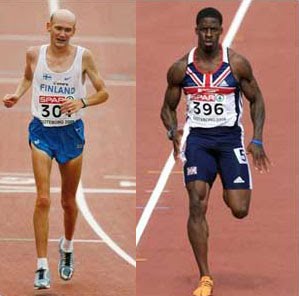It is fairly well accepted that strength, or the ability to produce force, lays the foundation for improvements in other important physical qualities such as speed and power. In other words, for any given strength level, an athlete has a limited ability to further improve speed and power. Once this relative ceiling is reached, improvements in strength create new opportunities to further develop speed and power. As a result, it is well-advised for athletes to consistently train for improved strength levels.
However, as an athlete’s training age increases, their window for adaptation shrinks. As they continue to develop various physical qualities (e.g. speed, power, strength, conditioning), they will approach their genetic ceiling and improvements will taper, if not halt altogether. Specific to strength, athletes will reach a point of peak or near-peak strength where further improvements will require a substantial amount of dedicated time, energy, and focus.
This raises a few questions:
Peak strength, or an individual’s maximal strength potential, is not an easy point to define. Simply, most athletes will NEVER reach their true maximal potential for any given physical quality, because every sport requires a unique combination of qualities whose development conflict with one another. As one example, maximum strength requires a shift in motor unit/muscle fiber composition toward more fast twitch, high force producing units, whereas maximum endurance requires a shift toward more slow twitch, low force units with lower levels of fatigability. This is why you’ll note such varying body types between the athletes that compete in sports that thrive on these extremes, such as short-distance sprinters (maximum speed, which requires maximum force) and marathon runners (maximum endurance). Ice hockey, like most team sports, falls somewhere in between these two extremes, so the development of different conflicting qualities needs to be balanced to maximize performance.

Which guy would you rather have on your team?
That said, most players that train consistently will reach a point where further improvements in strength will require too larger of a proportion of their training efforts, an increased risk of injury for relatively small gains, and a decrease in the degree to which further increases in strength directly translate to on-ice improvements. Naturally, the point at which you start to question whether further improvements in strength are worth the pursuit is relative to the individual’s genetic potential, injury history, and role as a player. For most players at this point, the goal should shift toward strength maintenance and maximizing the player’s rate of force development (ROFD), a neuromuscular quality that allows players to express the strength that they have faster. This strategy will essentially help players squeak out further improvements in their quickness, speed, and power capacity for their already well-developed strength capacity.
Part 2 of this series will provide a few specific examples about how to improve your rate of force development. In the meantime, check out this article I wrote for Elite FTS several years ago on the same topic: Rapid Rate of Force Development
To your success,
Kevin Neeld
Please enter your first name and email below to sign up for my FREE Athletic Development and Hockey Training Newsletter!